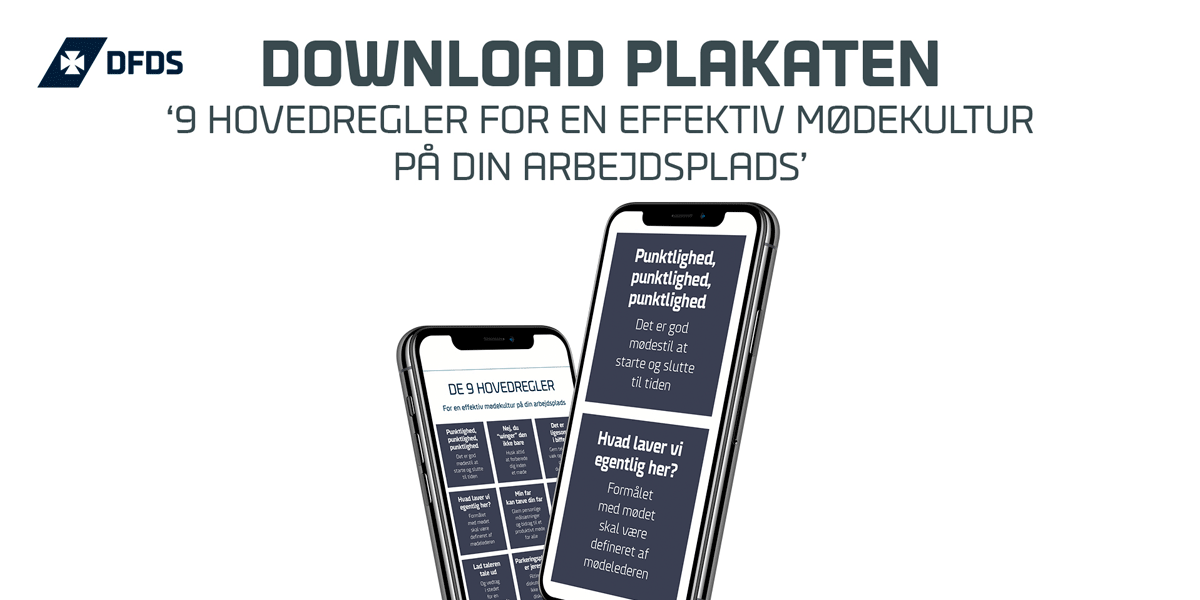
Methods for idea generation: How to get a lot more out of your brainstorm
Idea-generating meetings are among the most difficult meetings to succeed with. Who has not sat to a brainstorm and felt the energy slowly leave the meeting room? Meanwhile, the participants tacitly reach the same realization: This leads to nothing.
We want to help you do something about it.
To learn how your organization can get the most out of idea generation, we have sat down with Mette Ullersted. She is the director of PLAYMAKERS, which with more than 15 consultants attached is among Denmark's leading companies in facilitation, meeting management and workshops.
The principles behind effective idea generation methods
We have presented Mette Ullersted with a two-part assignment:
- What are the key principles behind effective idea generation?
- What are some of the best alternative idea generation methods that organizations can use instead of the classic brainstorm?
Let us first get the foundation in place: The principles that according to Mette Ullersted give your organization the best conditions for effective idea generation.
1. Silence
Quite surprisingly, silence is one of the most effective tools for kickstarting idea generation.
“I would actually recommend organizations to begin their idea development meetings with silence. For the first 2-5 minutes, the meeting participants sit to themselves and write down ideas on paper. One idea per note. When the time has passed, they can take turns presenting their ideas, ”says Mette Ullersted.
There are two significant advantages in particular in initiating the generation of ideas with silence:
- Participants do not influence each other's thoughts. The idea generation goes further
- Several character types are put into play. Extroverts typically drown out the introverted meeting participants, but the difference is largely evened out when you start the meeting with silence and alone time. Then the starting point for bidding is the same.
By the way: The chair of the meeting can to a greater extent expect all meeting participants to offer ideas when you begin the meeting in silence.
2. Boundaries
Call it leg braces, fencing or something completely third: Idea generation works best delimited.
Break tasks into small chunks. Example: The marketing department must develop ideas for launching a new product. Here, the idea generation could relate to such different areas as:
- Social Media
- Website
- Physical marketing
- Paid marketing
- Free marketing
- Marketing to resellers
- Consumer marketing
The more concrete the task, the easier it will be for the meeting participants to generate relevant, action-oriented ideas.
3. Visualization
Meeting participants should stay away from their computer and instead focus on the same task. They have to play ideas side by side. It is difficult with the faces buried in their respective laptops.
Visual elements are good for gathering attention. Whiteboards, flipcharts or post-it notes. The elements do not have to be wilder than that in principle.
It's about getting the meeting participants to turn their heads and focus on the same place.
4. Movement
Those who speak the most may not notice it, but the concentration of the participants decreases during the meeting.
“It's good for concentration to move around. Already after 20-25 minutes, the facilitator should introduce some movement. It can easily be something as simple as changing seats in the meeting room, ”says Mette Ullersted.
She encourages arranging the meeting room with different stations so that the participants naturally move around approximately every 5-10. minute.
5. Criteria
What idea should the participants set the target for?
- The cheapest?
- The most expensive?
- The best?
- The most long-lasting?
- The most short-term?
- The most ambitious?
- The most provocative?
Etc.
It is important to define the criteria that must be given the highest weight. Otherwise you risk developing a lot of good ideas that are not relevant in the context.
Three effective idea generation methods
If your organization adopts the five principles above, you are ready for effective idea generation.
It could in principle be based on the traditional brainstorm. However, it increases your idea production if you can vary between different methods. Then you can switch to a new method if you are stuck. And it happens.
Here, Mette Ullersted presents three alternative takes on the classic brainstorm.
1. Image-driven idea generation
Basically, effective idea development is a matter of thinking new thoughts. It is a difficult process to force by the power of the will, and therefore you need help.
A simple method: Bring 10 pictures to the idea meeting. Pictures of anything.
Sit together two by two with one picture. Change picture every 5 minutes. And then you develop ideas on the task, as you would otherwise do, but based on the picture. The method may sound silly, but it works.
You simply get access to thought associations that are not otherwise available.
2. Twenty different organizations
How would Maersk solve a task? How would Novo Nordisk? How would the Intelligence Service? How would a hospital? How would a group of criminals?
This method is about accessing idea generation from the perspective of vastly different organizations.
Make a list of twenty organizations. 20 very different organizations. They do not have to be equally respectable all together. The most important thing is that you force yourself to challenge habitual thinking.
You take turns pulling one of the 20 organizations. Then imagine how the organization would approach the task.
3. Play with time
How would you solve the task if you had ten years to do it? Or if you only had one week?
Again, it's a matter of getting the thoughts down side streets they had never found themselves.
You can do this by setting up scenarios for what resources you have available. Maybe you find that the best idea is not the one that requires the most time or the most money?

9 MAIN RULES FOR AN EFFICIENT MEETING CULTURE AT YOUR WORKPLACE
Do you want more out of your meetings? Give yourself and your colleagues a daily reminder of the recipe for the good meeting with this poster, which lists 9 main rules for an effective meeting culture in the workplace.
Download the poster now

MEETINGS AND CONFERENCES AT SEA
Do you want to hold a meeting or conference that is a little out of the ordinary? Then take the Oslo boat from Copenhagen, and experience an exciting alternative to the traditional conference centers.
Do you want to increase the results and sharpen the relations at the next business meeting, conference and company event? Our modern and spacious ships offer unique and unforgettable surroundings for all kinds of business meetings, conferences and corporate events.
